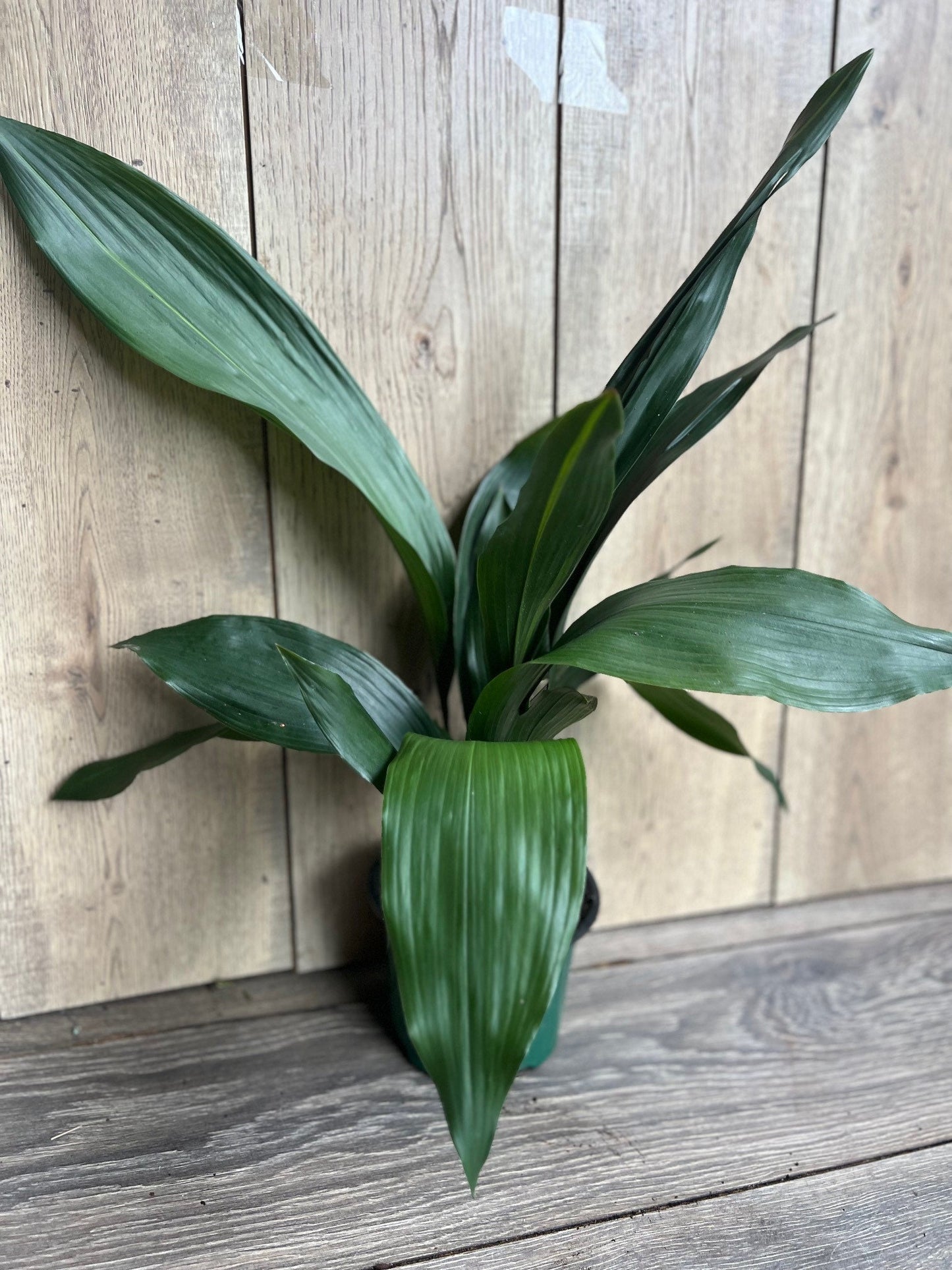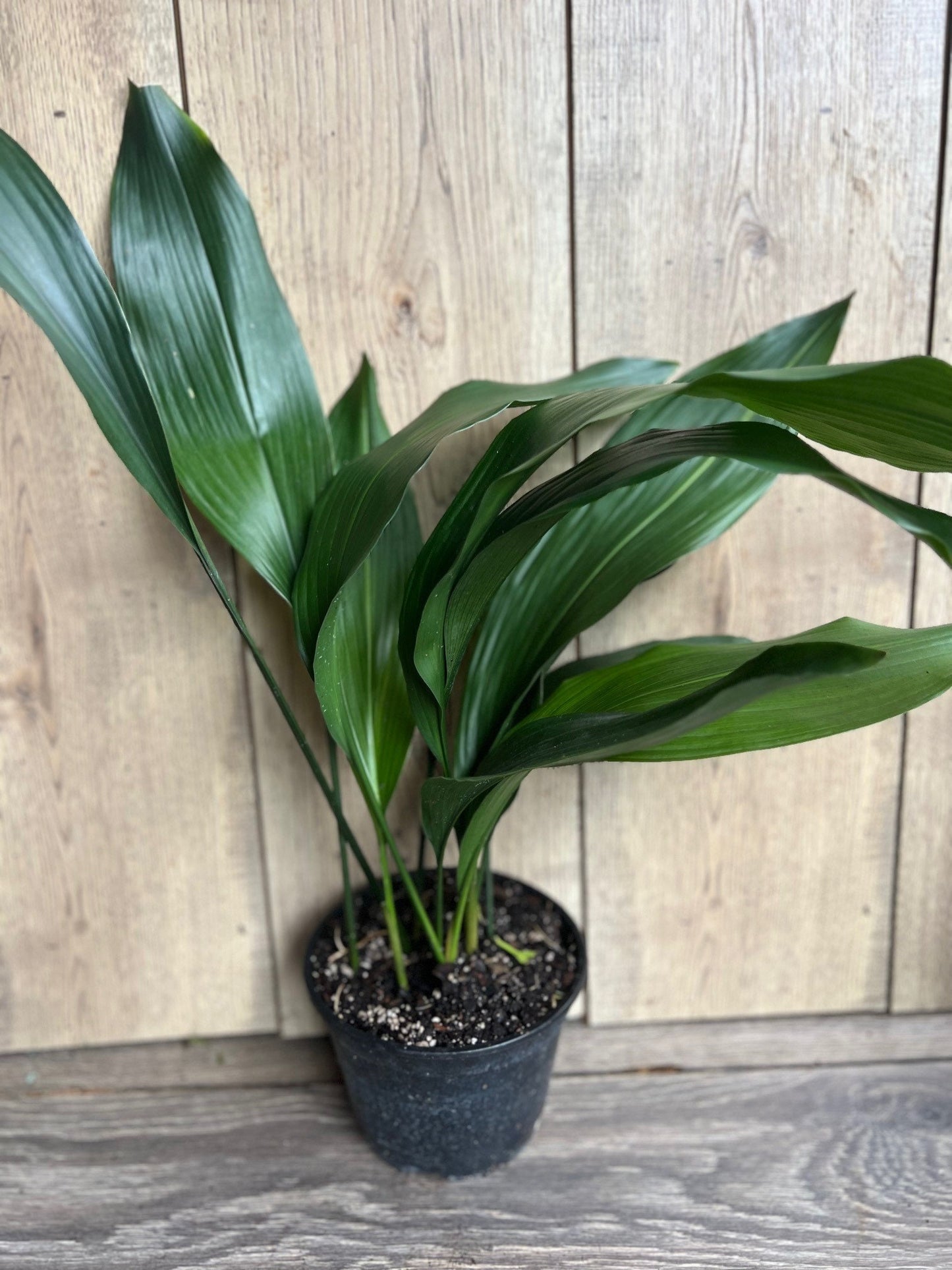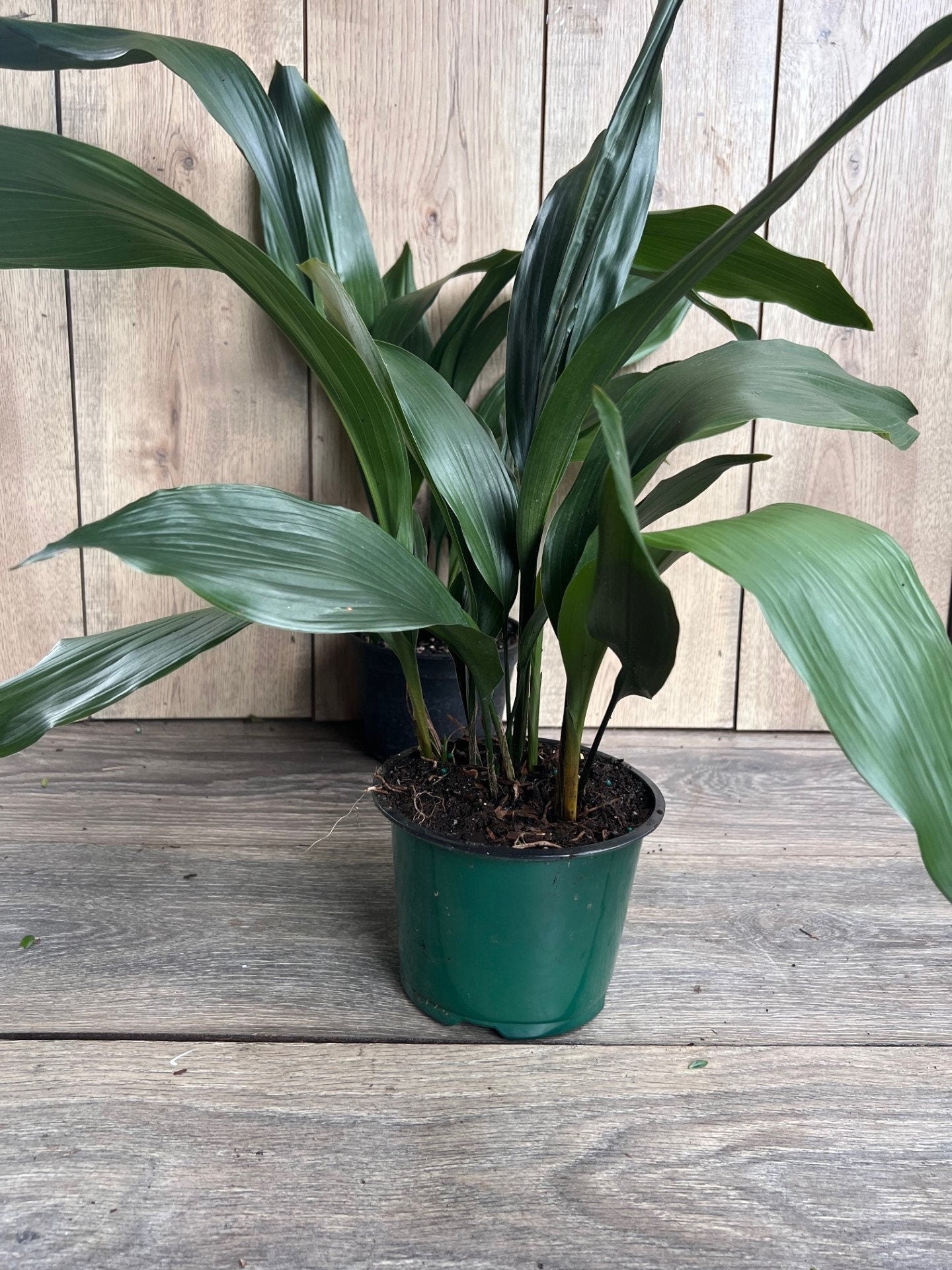1
/
of
5
CAST IRON PLANT - Aspidistra elatior - 6" pot
CAST IRON PLANT - Aspidistra elatior - 6" pot
Regular price
$30.17 USD
Regular price
$40.23 USD
Sale price
$30.17 USD
Unit price
/
per
Shipping calculated at checkout.
Couldn't load pickup availability
You will receive 1 Cast Iron Plant in a 6" pot, similar to the pictures.
The Cast Iron Plant (Aspidistra elatior) is a hardy, low-maintenance indoor plant native to East Asia. Known for its ability to thrive in low light and tolerate neglect, it’s an excellent choice for beginners or those with less-than-perfect plant care routines. Here's a guide to caring for your Cast Iron Plant:
1. Light Requirements
- Low to Moderate Light: Thrives in low to moderate light conditions. It’s ideal for rooms with indirect or filtered light, such as hallways or offices.
- Avoid Direct Sunlight: While it can handle some indirect sunlight, avoid prolonged exposure to direct sun, as this can scorch the leaves.
2. Watering
- Moderate Watering: Water when the top 1–2 inches (2–3 cm) of soil feel dry. It doesn’t like to be too wet or too dry, so maintain a balance. Overwatering can lead to root rot, so allow the soil to dry out between waterings.
- Watering Method: Water deeply, ensuring excess water drains from the bottom. Never let the plant sit in water.
- Humidity: Tolerates average humidity but will appreciate higher humidity, especially in winter. Place it on a humidity tray with pebbles and water to boost moisture levels if the air is too dry.
3. Temperature
- Ideal Temperature Range: Prefers temperatures between 59°F to 75°F (15°C to 24°C). It can tolerate cooler temperatures but should not be exposed to drafts or cold windows in winter.
- Avoid Cold Drafts: Does not tolerate frost or extreme cold. Keep it away from drafts and cold windows during winter.
4. Soil
- Well-Draining Soil: Use a well-draining potting mix that retains moisture without becoming soggy. A general-purpose indoor potting mix works well. Add perlite or sand to improve drainage if needed.
- Repotting: Aspidistra grows slowly and only needs repotting every 2–3 years, or when it outgrows its pot. Choose a slightly larger pot with drainage.
5. Fertilizing
- Light Feeding: Feed every 4-6 weeks during the growing season (spring and summer) with a balanced, diluted liquid fertilizer.
- Avoid Over-fertilizing: Aspidistra can be sensitive to over-fertilization, which may lead to leaf burn or weak growth. Always dilute fertilizer to half strength.
- Winter Care: Do not fertilize in fall and winter, as the plant is dormant and doesn’t need additional nutrients.
6. Cleaning and Maintenance
- Dusting the Leaves: Clean the glossy leaves with a damp cloth to keep them shiny and ensure efficient photosynthesis.
- Pruning: Remove yellow, damaged, or dead leaves at the base. Use clean, sharp scissors to avoid damaging the plant.
7. Pests and Problems
- Pests: Aspidistra is relatively pest-resistant, but it may attract spider mites, mealybugs, or scale insects. Treat any infestations with insecticidal soap or neem oil.
- Yellowing Leaves: Could indicate overwatering, underwatering, or nutrient deficiency. If lower leaves yellow, it’s often normal. If upper leaves yellow, check watering practices and avoid soggy soil.
- Brown Leaf Tips: Often caused by low humidity, over-fertilization, or inconsistent watering. Ensure proper humidity and adjust watering to avoid extremes.
8. Propagation
- Dividing Rhizomes: The best way to propagate Aspidistra is by dividing the rhizomes when repotting. Each division should have a few roots and leaves. Plant each section in its own pot with fresh, well-draining soil.
- Propagation by Cuttings: This method is less common and can take time.
9. Common Issues to Watch For
- Root Rot: Caused by overwatering or poor drainage. If you notice a musty smell or soggy soil, remove the plant from its pot, trim rotting roots, and repot it in fresh, well-draining soil.
- Leaf Spotting: Dark spots may indicate bacterial or fungal infections, often from overly wet conditions. Remove affected leaves and adjust watering practices.
- Slow Growth: Aspidistra is a slow-grower, so it requires patience. With proper care, it will thrive and remain a striking addition to your indoor space.
Share










